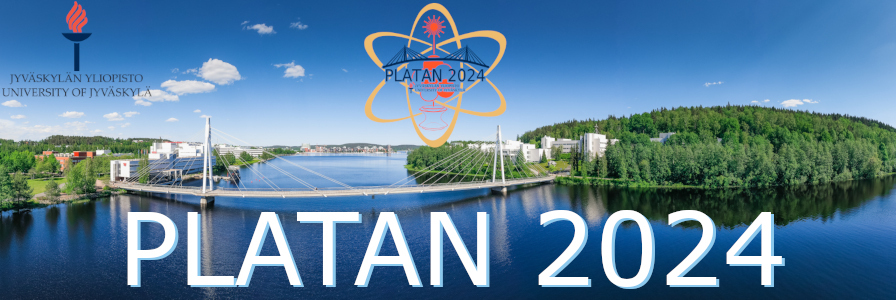Speaker
Description
We have developed the KEK Isotope Separation System (KISS) [1] at RIKEN to study the nuclear structure of the nuclei in the vicinity of neutron magic number N = 126 and 238U from the astrophysical interest. These neutron-rich nuclei have been produced by using multinucleon transfer (MNT) reactions [2] with the combinations of the low-energy 136Xe/238U beams and the production targets of W, Ir, and Pt. At the KISS facility, these MNT radioisotopes are ionized by applying in-gas-cell laser ionization technique. In the ionization process, we can perform laser ionization spectroscopy of the refractory elements with the atomic number Z = 70-78 such as Hf, Ta, W, Re, Os, Ir, and Pt, which can not be performed in other facilities. Laser spectroscopy is a powerful method to effectively investigate the nuclear structure through the measured magnetic moments and isotope shifts, and the deduced changes in the mean-square charge radii and quadrupole deformation parameters.
We have performed in-gas-cell laser ionization spectroscopy of 199g,199m, 200, 201Pt [3], 196,197,198Ir [4], 194,196Os [5], and 191,192Re produced at KISS. By using multi-reflection time-of-flight mass-spectrograph, we can identify the unstable nuclei from the measured atomic masses and efficiently measure the hyperfine structure, even though for long-lived nuclei, from the counting of the number of laser ionized atoms without detecting decay radiations.
In this conference, we will report the results of laser ionization spectroscopy, and the perspective of future plan at KISS.
References
[1] Y. Hirayama et al., Nucl. Inst. Meth. B353, 4 (2015), and B412, 11 (2017).
[2] Y.X. Watanabe et al., Phys. Rev. Lett. 172503, 1 (2015).
[3] Y. Hirayama et al., Phys. Rev. C 96, 014307 (2017), and 106, 034326 (2022).
[4] M. Mukai et al., Phys. Rev. C 102, 054307 (2020).
[5] H. Choi et al., Phys. Rev. C 102, 034309 (2020).

